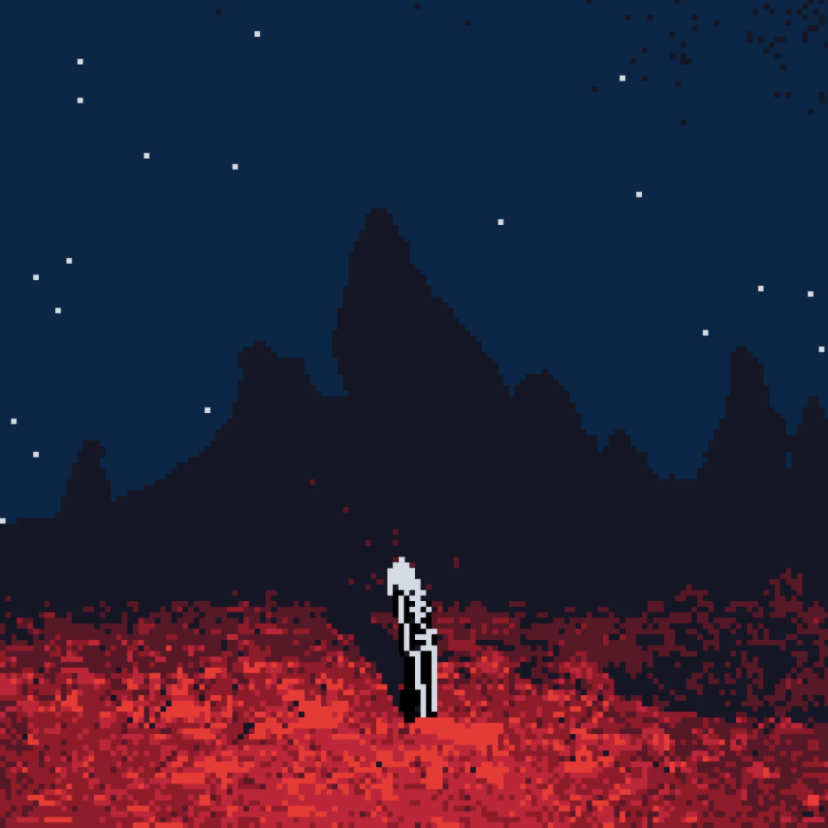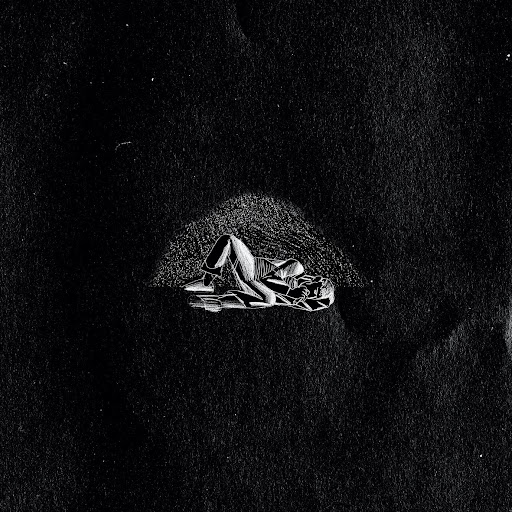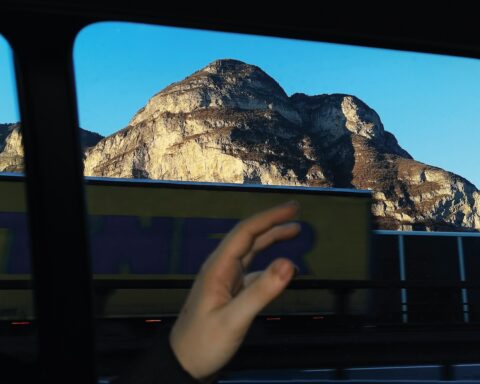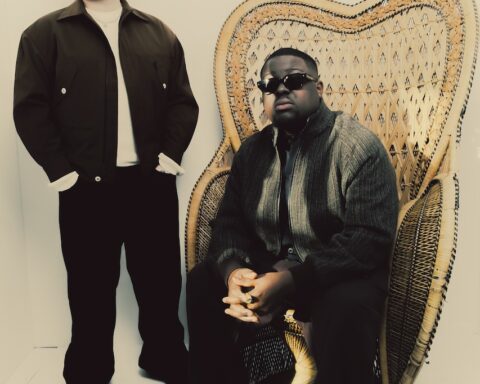Matador Records is thrilled to announce the release of -io on October 22nd, the sixth album by vocalist and composer Haley Fohr, best known as Circuit des Yeux. Watch the video for the album’s first single ‘Dogma’, co-directed and written by Fohr, below:
A celebrated figure in Chicago’s music community, Circuit des Yeux has released acclaimed albums via De Stijl, Thrill Jockey, and Drag City and toured throughout the world. -io is her most ornate and elaborate work to date – a set of compositions that nest Fohr’s otherworldly four-octave voice amid a 24-piece string, brass, and wind ensemble. The album was put to tape last fall by Cooper Crain at Chicago’s Electrical Audio studio and mixed by Marta Salogni (Bjork, Holly Herndon) with Fohr acting as arranger and producer. Written in the wake of personal loss and recorded in the midst of the pandemic, -io maps a geography of grief – a place where “everything is ending all the time.” While Fohr’s music has never been short on ambition, these songs are striking in their brilliance and strangeness. On -io, Circuit des Yeux has delivered a work that is vivid, immense, and fully illuminated.
Fohr says of first single ‘Dogma’: “Where there is faith there is violence. The story of civilization is complicated and layered with dogmas. At each individual’s incentive lies both a beacon and an instinct. The fool follows the outer while the idiot chases her interior. Society is a necessary subversion of the self. It is through time that our quiet alarms grow with great intensity until emancipation through implosion or explosion become imminent.”
Read the album bio by Sasha Geffen below.

-io
This is how grief becomes a landscape.
Before the pandemic cast its weather of mourning on the world, and before she began weaving together her sixth album as Circuit des Yeux, -io, Haley Fohr found herself grieving a close friend. For a time, the loss severed her from her art. A singular, celebrated figure in the Chicago experimental music scene, known for her arresting voice and the transportive moods she grows around it, Fohr had kept a steady creative practice since she first began recording her own music as a teenager. Grief ruptured that foundation. Fohr could not write for months, the longest fallow period she’d crossed since she experienced her first episode of major depression at 17.
In the winter just before the pandemic took hold in the United States, Fohr was scheduled to complete an artist’s residency at Robert Rauschenberg’s house in Florida. She wanted to finish a roster of new material before leaving, but the music would not budge. Stalled, she turned to the organ, away from her guitar, and started tracing shards of sound, grasping melodies that began, slowly, to lead somewhere. It was not what she had hoped to bring south, but it was a start.
“I went to the Robert Rauschenberg residency with this idea of trying to explore the hard work of joy. At that point, I had just been wallowing in this grief for so long. I thought, I want to write about joy. I know it’s going to be hard work,” Fohr says. “But when I was on this beach and in this really privileged, gorgeous place, I felt even more despondent. I thought it would be this balm, but instead it was just the saddest beach in my life.”
After sunset on Captiva Island, the Florida sky would glow a deep, burnt orange. The striking image became a conduit between Fohr’s interiority and her environment, keeping her from experiential isolation, tethering her to reality. She carried that sky back to Chicago and kept it with her as the world shut down and mass death triggered grief on an incomprehensible scale. Through this, Fohr began to cultivate a world inside the world, a world called -io, “a place where everything is ending all the time.”
The sky over -io is Florida’s strange, radiant orange. It’s a built environment, unnatural, made from concrete and glass, with skyscrapers that stretch to the vanishing point as you gaze up at them. It’s crumbling and suffocating, a city perpetually on the brink of collapse, where tension never topples over into catharsis, where the heat never breaks.
Inside this world and its closed loop of time, Fohr found herself able to begin moving again. “I was haunted by memories in the pandemic,” she says. “As someone with PTSD, memories are all twisted up inside of me in a way that doesn’t help my higher self. Making this album was once again an exercise of trying to relieve myself of some of that darkness in a way that music has always done for me.”
Under lockdown, her typically collaborative songwriting practice became solitary. She wrote on piano and organ, instruments on a larger scale than her usual guitar that felt more “like a solid foundation you can stand on.” Her lyrics kept returning to images of black holes and gravity, all-consuming phenomena that rend our common experience of physical reality. “I became obsessed with black holes, which is the ultimate gravitational pull,” Fohr says. “It also makes such a synonymous metaphor to death. Things go in, they can only go one way. They go in and they never come out.”
From that colossal gateway, songs began to form. They followed the disintegration of the world as it stands, the hard-wrought rituals and habits that are already beginning to fracture under the pressures of climate catastrophe, as on “Vanishing,” where Fohr sings “goodbye” to everything she can see and touch around her. They pinned down claustrophobic moods through the threatening whispers of “The Chase,” and they shook them loose with sweeping vocal runs, like those that lattice the slow, enveloping “Walking Toward Winter” and pierce the melancholic “Stranger,” a chilling piano-and-string composition that was recorded live in a single take.
Working at home on her computer, Fohr wrote, arranged, and produced each note of -io. She wrote for a 23-piece orchestra, gathering strings, horns, and drums around her daring vocal melodies. She staged -io on a scale vaster than anything she’d recorded before, a scale that matched the enormity she’d weathered, big enough to hold the world in its tumult.
Under COVID restrictions, Fohr could only record with six other players in the studio at a time. She and her collaborators – 13 renowned musicians from Chicago’s jazz, classical, and experimental scenes – built -io layer by layer, entwining its pain with the clear yearning that sparks at its dark heart. Horns cry out like terrified and distant voices from the dizzying waltz of “Neutron Star.” A spaghetti-western guitar reverberates as if in a cavern amid the percussive pummel of “Dogma.” Strings thrash against each other like sheets of rain amid “Vanishing’s” apocalyptic thrum. Amid them, Fohr’s voice rears in space, overdubbed to the point where it becomes an architecture of its own, at once the subject in the narrative and the surrounding environment. The effect is at once capacious and crushing, like being drawn into a gas giant.
This is what happens when you take grief’s smothering and render it in space: It expands. It becomes something you can traverse. That quiet, impossible feeling of loss can suddenly be crossed. The body moves through it. What once seemed to be an impenetrable collapse turns into a site of possibility. From the wreckage, something grows, and the ruin is no longer a ruin. In all its smoldering and all its weight, it is simply a place to begin.
— Sasha Geffen
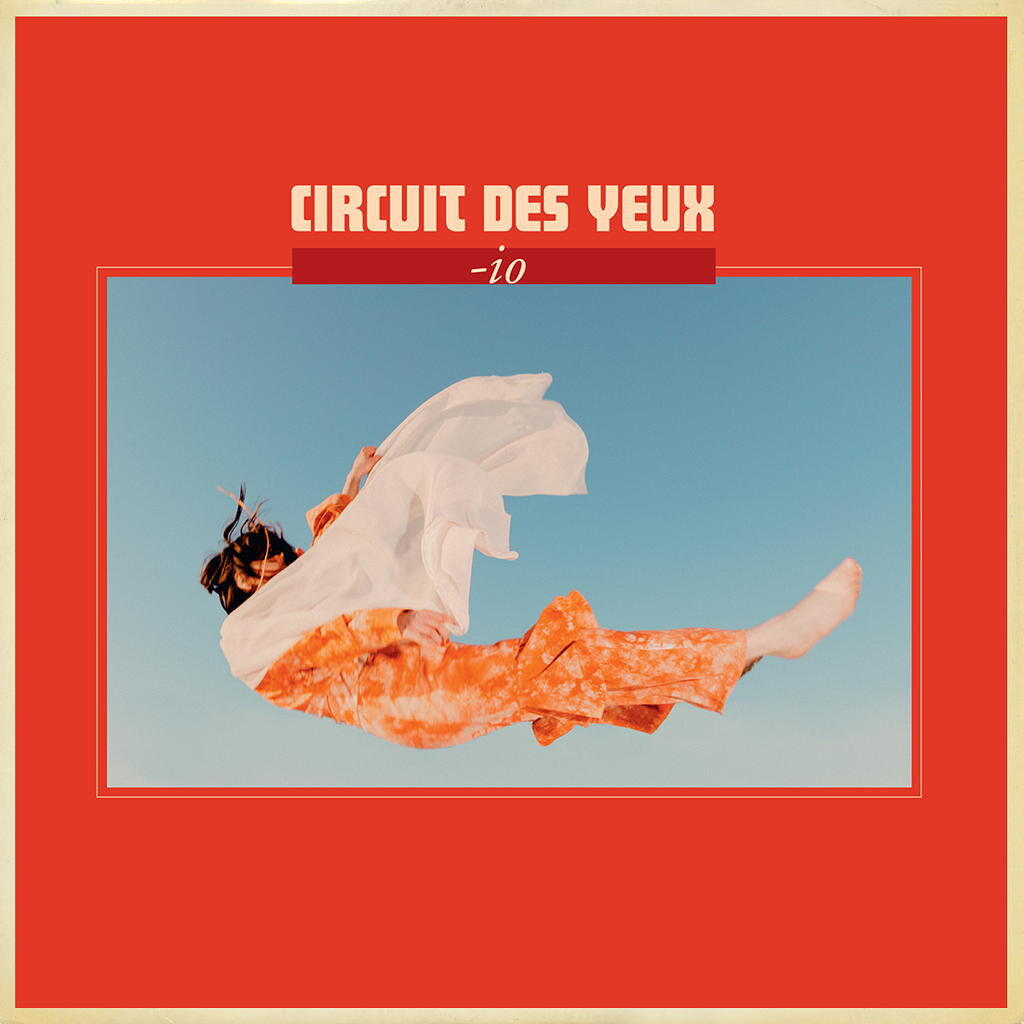
Circuit des Yeux – -io
- Tonglen | In Vain
- Vanishing
- Dogma
- The Chase
- Sculpting the Exodus
- Walking Toward Winter
- Argument
- Neutron Star
- Stranger
- Oracle Song
Pre-order – https://cdy.ffm.to/-ioalbum
Circuit des Yeux




